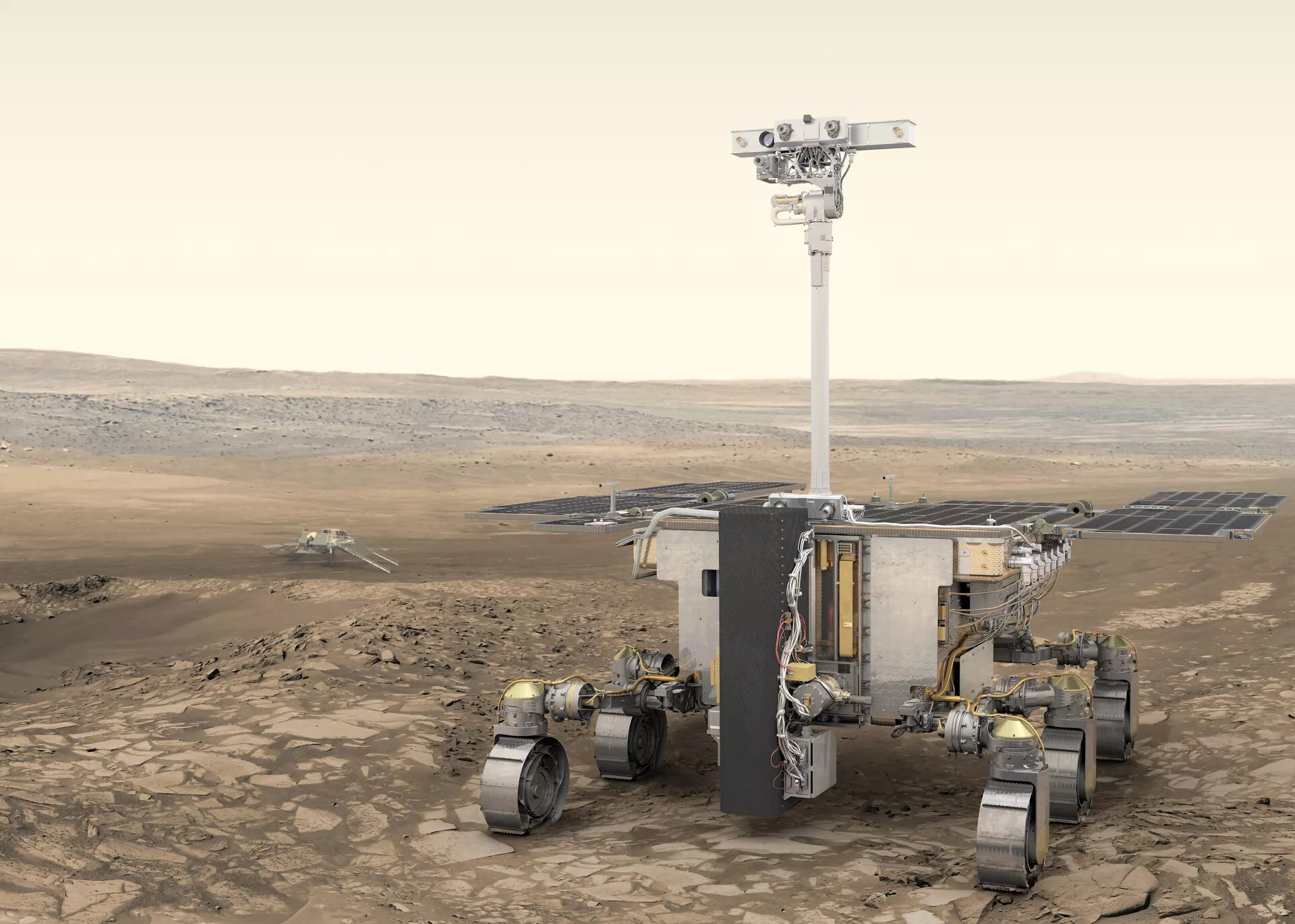Bernadett Pál and Ákos Kereszturi, researchers from the Institute of Astronomy at the ELKH Research Centre for Astronomy and Earth Sciences (CSFK), have modelled the appearance of small quantities of liquid water on the entire surface of Mars by studying hygroscopic salts. Hygroscopic salts bind water vapor directly from the atmosphere to form a liquid brine. The results of computer modelling suggest that the late evening and early morning hours may be suitable for the appearance of water on Mars in spring and summer, with a greater volume in the northern hemisphere than in the south. Details of the research were published in the specialist journal Icarus.
Projects exploring the possibilities of extraterrestrial life often focus on the presence of liquid water, which is essential for life as we know it. Researchers believe that although water was abundant on neighbouring Mars millions of years ago, weak gravity and the lack of a magnetic shield, or magnetosphere, have allowed much of it to escape into space. The planet's remaining water resources are today present in the form of water vapor, and predominantly ice. With temperatures averaging around –60 degrees Celsius (°C) and very low atmospheric pressure on Mars, even if surface water ice melts, it quickly evaporates or sublimates from ice to gas and cannot remain stable as a liquid.
However, brines can be liquid at much lower temperatures. On the surface of Mars, the Phoenix space probe and later the Curiosity Mars rover detected various perchlorate salts – such as calcium perchlorate – which, because of their highly hygroscopic properties, help the liquefaction process. In this process, solid salt absorbs so much water that it becomes a liquid. The process is often studied under chemical laboratory conditions, and understanding it is important for food quality preservation studies or agricultural research, among other fields.
So far, no field experiments have been carried out on Mars to investigate the liquefaction process, so the phenomenon is still mainly studied using computer modelling. It is planned for the European ExoMars program to be the first to study liquefaction on the surface of Mars in 2023. The HABIT (HabitAbility: Brine Irradiation and Temperature) experiment, known as BOTTLE (Brine Observation Transition To Liquid Experiment), will take place on board the Russian Kazachok lander carrying the Rosalind Franklin rover. CSFK researchers are also involved in the development of and research on the instrumentation that will test the vapor capture capacity of several salts. The minimum condition for the formation of a given brine is the existence of sufficient temperature and atmospheric humidity values, which are different for each salt. The magnesium perchlorate and calcium perchlorate tested in the current Hungarian study can become liquid even at very low temperatures of around –70 °C if the humidity is high enough.
"I have been working for years on modelling the potential for liquid water to appear on Mars, and the results of the first real experiment on Mars will teach us a lot. I am excited to see the first results of the ExoMars BOTTLE experiment", said Bernadett Pál, PhD student and researcher at the Research Centre for Astronomy and Earth Sciences, and lead author of the paper published in the journal Icarus.

Based on the results from the Hungarian researchers, an aqueous solution of calcium perchlorate may appear in both hemispheres from spring to late summer, covering an entire Martian year. According to local Martian time, there is a chance of this from late evening until the early hours of the morning, with the highest probability around 1 am. Across the entire surface of the planet, liquefied salts can appear almost anywhere in the northern hemisphere above latitude 30° in the late evening, and in the early morning, the large basins (Acidalia Planitia and Utopia Planitia) are the areas of interest for liquefaction studies. The planned landing site of the ExoMars rover, Oxia Planum, could be an ideal place for liquid water to appear in both the late evening and early morning hours. In the southern hemisphere, small amounts of liquid water may temporarily appear at the edge of the retreating seasonal ice cap.
"Thanks to the recent work of Bernadett Pál and Dr Ákos Kereszturi, we have gained important information about the appearance of Martian brines, which is crucial for understanding their biological potential. The current Hungarian research on the spatial and temporal distribution of solutions using a different climate model has led to similar results to those we published in our 2020 paper, which confirms the results of both studies," said Dr Edgard Rivera-Valentín, a planetary scientist at the USRA Lunar and Planetary Institute and a NASA Young Investigator Fellow. "By thoroughly investigating the effects of seasons and times of day, this work will contribute to the advancement of the discipline and support future missions to Mars, including the ExoMars BOTTLE experiment," added the US scientist.
Bernadett Pál's doctoral research was supported by NKFIH project No. COOP-NN-116927. The ELKH Research Centre for Astronomy and Earth Sciences has been certified as a Hungarian Academy of Sciences (MTA) Excellent Research Site.